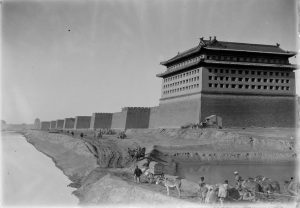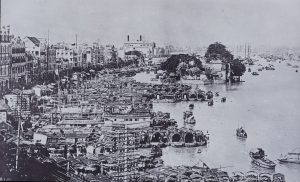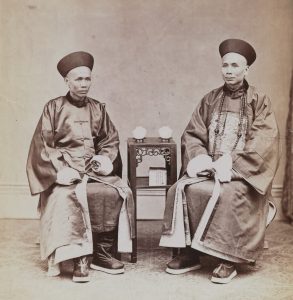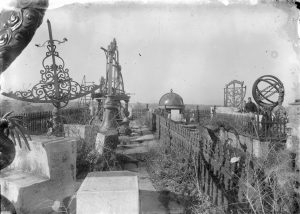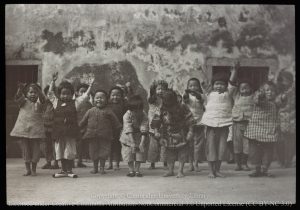
Pamphlets of nineteenth-century China
At Cambridge University Library, the Royal Commonwealth Society Department continues to push ahead with the discovery of its collection of rare nineteenth-century pamphlets. Recent work has concentrated upon China, adding more than 50 new titles to the online catalogue iDiscover. A number of these publications are not readily accessible in UK repositories, because they were printed in Hong Kong or elsewhere in China, and copies were not automatically acquired by the UL or the UK’s other legal deposit libraries. The pamphlets’ major themes have been illustrated with images from the RCS’s important collection of historic photographs of Asia.
The earliest pamphlets date from the 1830s and 1840s and relate to Britain’s trade with China. At the time it was limited to Canton and funnelled through a number of Chinese merchant houses called the ‘Cohong’. One of the earliest contributions, ‘The present position and prospects of the British trade with China’ (1836) was written by Sir James Matheson (1796-1878), co-founder (with William Jardine) of one of the leading companies trading with China, Jardine, Matheson & Co. The firm’s extensive archives are preserved by the UL’s Department of Manuscripts and University Archives.
The pamphlets reflect the series of commercial and diplomatic disputes between Britain and China, including the illegal importation of opium, which intensified during the period, precipitating the first Opium War of 1839-42. They also discuss the Treaty of Nanking which concluded the conflict, and gave Britain the right to trade in five ports and ceded the island of Hong Kong. One of the great treasures of the RCS photograph collection is a series of panoramic views of Hong Kong from the early twentieth century.
Another series of pamphlets and periodical articles was published during the later nineteenth century, reflecting Europe and America’s growing interest in China’s history and the diversity and richness of its geography, languages, people and culture. Several contributions were written by the American traveller Eliza Ruhamah Scidmore (1856-1928), a correspondent of the National Geographic Society, who became its first female trustee. Other authors were fascinated by social customs and in particular by life in the imperial court.
The pamphlets examine Chinese religious life and illustrate the accelerating activity of Christian missionaries, first begun after 1842. The RCS holds photographs collected by the Church Missionary Society and by the Presbyterian medical missionary Dr Lewis Paton, illustrating the churches, schools and hospitals run by missionaries. The final works document the political turmoil which plagued China during the 1890s and the deposition of Emperor Guangxu (1871-1908) by the Empress Dowager Cixi (1835–1908) in 1898, who rejected his programme of political reform and modernisation. Writers also noted the developing nationalist movement within China opposing foreign influence and the expansion of Christian missions, which inspired the Boxer Rebellion of 1900.
All of these pamphlets and periodical articles can be searched for on iDiscover using thematic and geographical keywords or Library of Congress subject headings. Please visit Cambridge Digital Library to view more compelling photographs of China.
The featured image at top is Hong Kong as seen from the anchorage, 1846.

